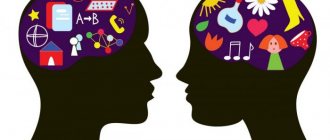Personal motives in psychology are a certain internal force of a person that motivates him to action, which is important for achieving the goal that the individual has determined for himself. In the scientific world, the definition of personal motives is very diverse. Some researchers believe that these are ideas, as well as a representation of a person, others call them the motives of a person’s thoughts and attitudes, which he adheres to, guided by them in life. Many people often know the feeling of wanting to move mountains and satisfy their need. This feeling and experience gives the individual strength, as well as self-confidence, which encourages the person to form and grow as a personality. Strictly speaking, this experience is the motive of the individual.
Personality motive is a very important attribute in the life of an individual. It is the motives that determine what heights a person will reach. In career growth, employees' aspirations acquire special properties, so management often tries to create external motives. External motives include salary increases or bonuses, sometimes it’s just praise, etc. These things motivate a person to show interest and exert more effort in order to receive external rewards and perform better as a result.
But it is worth noting that internal motives are much stronger than external ones. If an individual, so to speak, is fired up from within with a certain goal and certainly wants to achieve it, then he can overcome all obstacles, since he does it for himself.
Personal motives
Personal motives are the need (or system of needs) of the individual in the function of motivation. Internal mental motivations for activity and behavior are determined by the actualization of certain needs of the individual. The material is published at https://zachetka.rf Activity motives can be very different:
· organic - aimed at satisfying the natural needs of the body and are associated with the growth, self-preservation and development of the body;
· functional - satisfied through various cultural forms of activity, for example playing sports;
· material - encourage a person to engage in activities aimed at creating household items, various things and tools;
· social - give rise to various types of activities aimed at taking a certain place in society, gaining recognition and respect;
· spiritual - they form the basis of those activities that are associated with human self-improvement.
Organic and functional motives together constitute the motivation for the behavior and activity of an individual in certain circumstances and can not only influence, but change each other.
Human needs will appear in specific forms. People may perceive their needs differently. The material was published on https://zachetka.rf Taking into account the dependence on ϶ᴛᴏgo, motives are divided into emotional ones - desires, desires, inclinations, etc. and rational - aspirations, interests, ideals, beliefs.
There are two groups of interconnected motives of life, behavior and activity of an individual:
· generalized, the content of which expresses the subject of needs and specifically the direction of the individual’s aspirations. The material was published on https://zachetka.rf The strength of this motive is determined by the significance for a person of the subject of his needs;
· instrumental - motives for choosing ways, means, methods of achieving or realizing a goal, conditioned not only by the need state of the individual, but also by his preparedness, the availability of opportunities to successfully act to realize his goals in given conditions.
There are other approaches to classifying motives. For example, according to the degree of social significance, motives of a broad social plan (ideological, ethnic, professional, religious, etc.), group plan and individual-personal nature are distinguished. There are also motives for achieving goals, avoiding failures, motives for approval, and affiliative ones (cooperation, partnership, love).
Motives not only encourage a person to act, but also give his actions and actions a personal, subjective meaning.
In practice, it is important to take into account that people, performing actions that are identical in form and objective results, are often guided by different, sometimes opposing motives, and attach different personal meaning to their behavior and actions. In light of this, the assessment of actions should be different: both moral and legal
Didn't find what you were looking for? Use the search:
Best sayings:
Once in a class, one teacher said, when the lecture was ending - it was the end of the class: “Something smells like the end here.”
8251 —
185.189.13.12 studopedia.ru Not the author of the materials posted. But it provides free use. Is there a copyright violation? Write to us | Feedback.
Motivation in everyday life
Most often, the theoretical understanding of a particular psychological phenomenon has little in common with the everyday understanding of the same phenomenon. It's the same with motivation.
The system of motives is, of course, an integral part of any personality. This is one of those strong factors that makes a person unique.
Motivation is closely related to the mental characteristics of the individual (for example, for choleric people it is extremely important to move as much as possible in order to receive new emotions and impressions), his physical condition (during illness no one wants to do anything), social adaptation (low self-esteem gives rise to desire hide and do nothing so as not to receive condemnation from others), etc.
All these features are inherent in a person by nature for a reason. In fact, the meaning of life for everyone is to exist according to their own scenario, i.e. realizing your own goals, fulfilling your desires, fulfilling your destiny.
What is Mindfulness. Living consciously is an art! Here and now, guys, here and now
Therefore, every person in the world strives to acquire a unique set of values, qualities and impressions that will help him fulfill his very “inner” purpose.
But this does not mean at all that everything we want is right, and everything we don’t want is wrong and bad. Human motivation may be unformed, and therefore you need to work on it, as well as on your own development.
Working on motivation allows you to develop the skill of overcoming difficulties and obstacles (including laziness or despair).
It is important to listen to your own desires, motives and interests in order to get to know yourself better, to understand which direction to move, but you should not give free rein to your aspirations and submit to their will. This can lead to the collapse of all life guidelines, values and hopes.
Forms of personality orientation
The basis of all forms of personality orientation are the motives of activity.
Wish
Desire as a form of orientation is characterized by awareness not only of one’s need, but also of possible ways to satisfy it.
Interest
Subjectively, interest is revealed in the emotional tone that accompanies the process of cognition or attention to a certain object. One of the most significant characteristics of interest is that once it is satisfied, it does not fade away.
As a rule, interest develops, evolves, and gives rise to new interests corresponding to a higher level of cognitive activity.
Interest is the most important motivating force for understanding the surrounding reality. There are:
- immediate interest caused by the visual attractiveness of the object,
- indirect interest in the object as a means of achieving the goals of the activity.
Stability, breadth, and content of interests are the most important personality traits, one of the cornerstones of a person’s personality. Having spoken about a person’s interests, we thereby draw a fairly accurate psychological portrait of him.
Addiction
In many ways, interest develops into inclination due to the inclusion of a volitional component. Inclination is an individual’s orientation towards a certain activity. The basis of the inclination is the deep, stable need of the individual for a particular activity.
In a sense, we can say that inclination is an interest in an activity.
.
Interest and inclinations are a factor in the rapid development of an individual’s abilities.
Worldview
Worldview allows a person to plan his activities for many years to come: he knows that a lot can change over the years, but the basic laws by which the world exists will remain unshakable.
Conflict in the system of motives
It would be very easy to live if the system of motives had a strictly defined hierarchy and obeyed certain rules that you could consciously regulate.
But taking into account the fact that drives, attitudes, and some needs are formed and influence you unconsciously, it is difficult to establish conscious control over the motivational sphere. Moreover, at every moment of time the leading impulses that motivate you to activity change.
You were just getting ready to go to work, when you suddenly remembered that you haven’t talked to your friend yet, you forgot to ask how she went to the restaurant yesterday. And so, instead of giving in to the steady, stable, conscious urge to work, you chat and gossip, and then regret the wasted time.
To avoid such conflicts, it is recommended to clearly plan your day, taking into account the motives, needs, goals, interests that are of utmost relevance at the moment. At the same time, it is important to reduce the influence of attitudes and unconscious drives - to do this, live consciously.
The influence of orientation on motivation of activity
Intrinsic and extrinsic motivation
Depending on a person’s inclinations, his worldview and other forms of orientation, he may be more prone to internal motivation or to external motivation.
Awareness-unconsciousness of motives
- conscious,
- unconscious.
People with developed ideals, worldviews, and adequate beliefs, as a rule, are driven by conscious motives in their actions. The confusion of the inner world and the abundance of psychological defenses can lead to the fact that the main drivers are unconscious motives.
Quantity and quality of needs, interests, inclinations
Social needs:
- a person’s desire to live in society,
- desire to interact with other people,
- the desire to benefit people, to participate in the division of labor,
- the desire to understand other people and social processes.
The more qualitatively different needs, interests, and inclinations a person has, the more versatile and flexible his activities. A purely human quality is the ability to combine several different interests in one’s activities.
Motivation techniques
In the modern world, three motivation methods are actively used: motivation of workers (staff); motivation of students; self-motivation.
Staff motivation
The main method of motivating employees is the incentive system. This system can include both material and moral elements.
It is best, of course, when comprehensive measures are used to influence motivation, because in this way it is possible to increase work activity and labor efficiency for a long time.
Depending on the type of management system and the characteristics of work organization, various methods of stimulating personnel are used:
- Methods of encouragement . One of the most common methods of motivating employees. The staff are promised some material rewards (for example, a salary increase, bonuses, etc.) for high-quality performance of their work in a short time;
- Administrative methods . They are also often called organizational. They include the influence of authorities, charter, law or certain regulations and imply the use of psychological influence on the consciousness of workers, their social interests;
- Social-psychological methods . They include psychological encouragement, professional growth, etc.
Naturally, one method will not work. Each employee is individual, he has certain aspirations, priorities and interests.
Some people can be motivated by a cash bonus, while others need administrative measures that imply control and a system of instructions.
Student motivation
Alas, cases of self-motivation among pupils or students are extremely rare. So the tasks of a teacher or educator include helping students and motivating them.
Moreover, the desire must be formed in such a way that productive educational activity is maintained throughout the entire period of study.
There are a huge number of methods for motivating students today, so let’s focus on the most effective of them:
- Introducing interesting life examples and personal experience into the educational process. This is an excellent motivation that allows students to clearly see the end goal of their learning and maintain interest in the subject.
Tell a couple of unusual facts about the subject, draw paradoxical analogies, talk about personal experience - everything will work perfectly.
- Organizing a scientific dispute or discussion . It is worth finding a topic for discussion that will arouse students' interest and capture their attention.
- Incorporating emotions into the learning process. Refusal to dryly present facts that have long been known to everyone is a thing of the past.
In order for the subject of study to become “alive” and arouse interest among students, it is necessary to “ground” it as much as possible. Tell us about the fate of the scientists, about some emotional upheavals associated with historical events.
Let your presentation be accompanied by an emotional experience.
- Comparison of science and life situations . Give some examples illustrating the influence of scientific facts on human life.
- Creating successful situations . Works especially well for motivating students who experience certain learning difficulties. The difficulties of studying are much easier to perceive with joyful experiences and emotions.
Self-motivation
This is one of the most understandable methods of motivation for many. It is associated exclusively with the desires and aspirations of the individual. When you try to improve your own living conditions, many difficulties are much easier to overcome.
A person is able to independently convince himself that he needs to act one way and not another in order to achieve his goal.
The complexity of this technique is that the process of self-motivation is individual for everyone, so it is not possible to develop a universal method of self-stimulation.
The individual will have to decide for himself exactly how to motivate himself. You can also use techniques that allow you to find ways to motivate (by the way, experienced manipulators use them).
Perhaps one of these algorithms will help you get on the right path and understand exactly how your motivation is born.
Types (forms) of activity
Within the framework of a social studies course, there are usually four main forms of activity - play, learning, work and communication.
- A game is a free developmental activity that a subject performs at will and for the pleasure of the process. The game usually has a clear set of rules. During play, children often prepare for adult activities - study, work, family relationships.
- Learning (cognition) is a conscious and purposeful process of acquiring new knowledge and skills.











